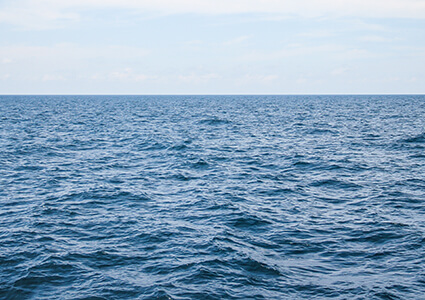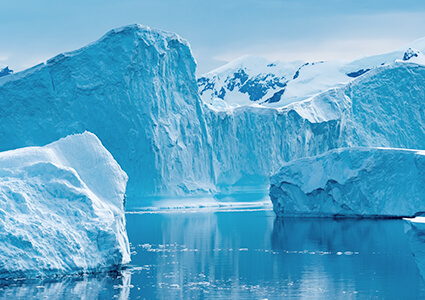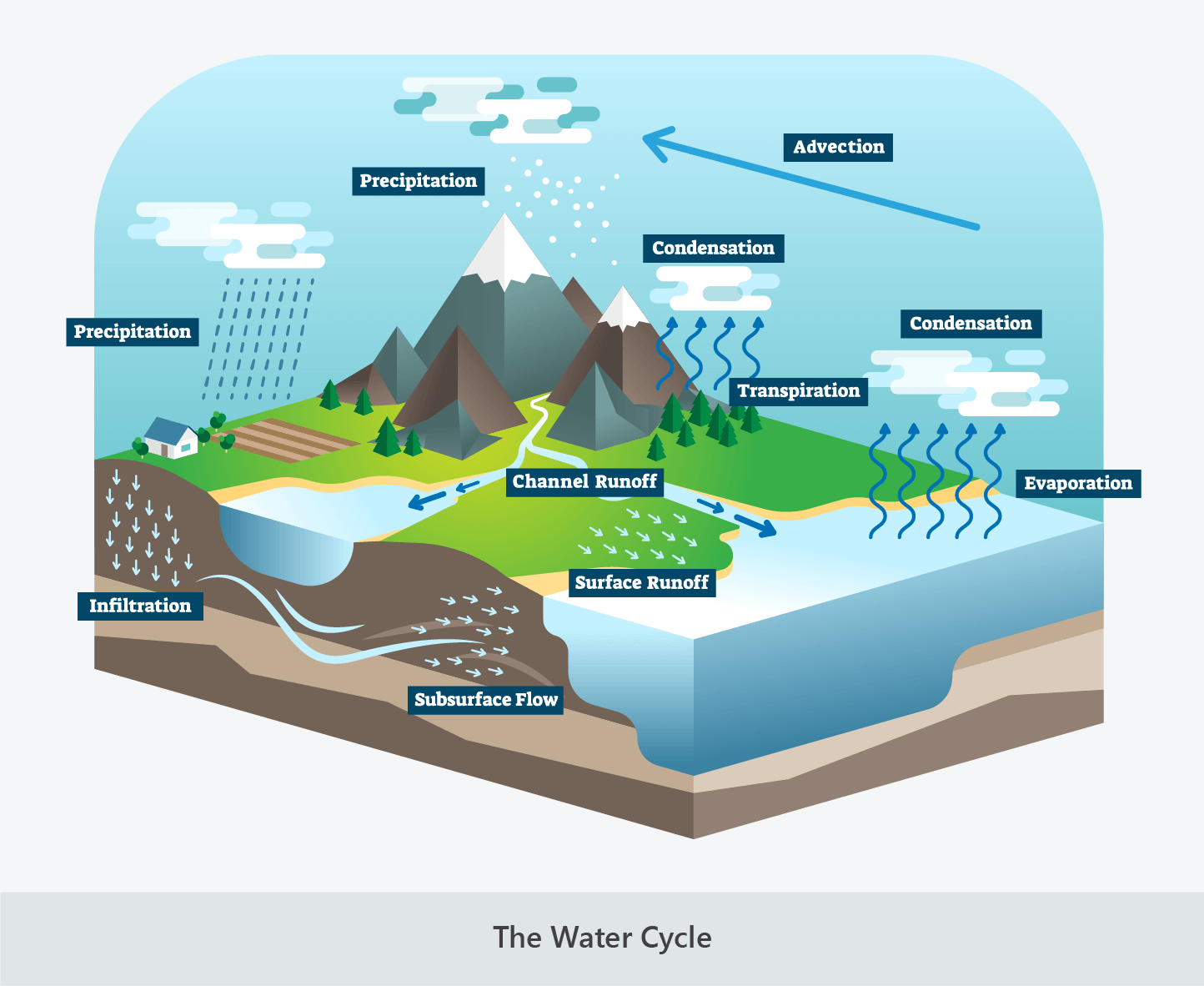3 | The Hydrosphere
The Hydrosphere
- The hydrosphere incorporates all the water on Earth, including liquid water, ice and water vapour.
- The portion of Earth’s water that is frozen is sometimes categorised as its own sphere, known as the cryosphere.
- Saline water – water that contains high concentrations of dissolved salts – accounts for approximately 97.5% of all the water on Earth.
- Almost all of this is found in Earth’s oceans.
- Fresh water – water that contains low concentrations of dissolved salts – accounts for approximately 2.5% of all the water on Earth.
- Almost all of this is either frozen or underground.


The hydrosphere incorporates all the water on Earth.
Almost all water exists as saline ocean water and most fresh water is either frozen or underground.
(Images: tendo23, Adobe Stock; Luis, Adobe Stock)
- Water moves through the hydrosphere via a series of processes known as the water cycle.
- These processes include:
- Evaporation – the transformation of water from liquid to gas as it moves from oceans or land into the atmosphere.
- Transpiration – the evaporation of water from plants.
- Condensation – the transformation of water from gas to liquid, forming clouds, fog or dew.
- Advection – the movement of water through the atmosphere.
- Precipitation – the movement of condensed water from the atmosphere to land or oceans, as rain, snow, hail or sleet.
- Runoff – the movement of water across land, including surface runoff – the movement of water over ground – and channel runoff – the movement of water in rivers and streams.
- Infiltration – the movement of water into the ground.
- Subsurface flow – the underground movement of groundwater.

Water moves through the hydrosphere via a series of processes known as the water cycle.
(Image: VectorMine, Adobe Stock)
Quizzes

